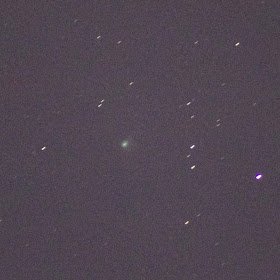 |
| 12/10/2015 Single frame Canon T5i, ISO 6400, 5 sec, f/5.6, 300mm - tweaked in Instagram |
I missed the comet-moon-Venus conjunction the other day, so I've had my eye out for a clear morning to try to find Comet Catalina (C/2013 US10) rising in the Eastern morning sky. It was sort of a spontaneous morning so I ran out without looking up a sky map first. I swiveled around for a while with no luck, so I got my phone out and went to Heavens-Above.com.
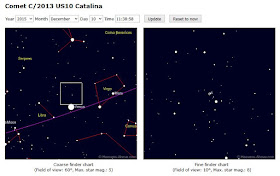 |
| Screen grab from Heavens-Above.com - see how the field of view is slightly tilted so Venus and Spica look like they're at the same elevation. Totally didn't realize that at first! |
They had a pretty good star chart posted (below), but it was a little misleading. Maybe I'm just out of practice. At first glance it looked like the comet should be directly above Venus and directly to the left of Mars. This led to me looking way too high. The Heavens-Above chart is slightly tilted but accurate. I found Stellarium to be much more intuitive.
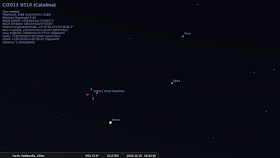 |
| See how in Stellarium Spica is clearly higher than Venus, Stellarium feels more intuitive to me. |
Of course I had to add Comet Catalina to Stellarium first - and it had been so long I forgot how. So then I found this helpful How To article left over from Comet ISON. It was really simple, but I was still annoyed because I was racing the rising sun!
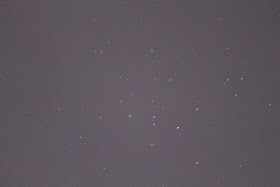 |
| Photo at the top straight out of the camera; ISO 6400, 5 sec, f/5.6, 300mm |
I'm used to finding things with Stellarium, so once I knew to look to the top left of Venus, it was a pretty quick find. I got that familiar rush of excitement when I first saw that little green fuzzy blob. I think I'll wait to see if it gets brighter before trying to do a tracking stack of images - but blobs count! This is another confirmed comet photo!
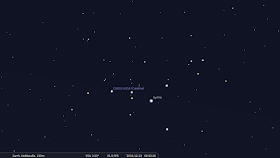
No comments:
Post a Comment